- Home
- Mary Higgins Clark
Loves Music, Loves to Dance Page 25
Loves Music, Loves to Dance Read online
Page 25
The theme of a missing child struck a personal chord in me. Once, when we moved to a new home, my youngest daughter, Patty, was briefly missing. That’s when I experienced the panic any mother feels under these circumstances.
What stimulated you to write A Stranger Is Watching?
My research into patterns of crime. I have been shocked and saddened to see how life and death can hinge on tiny twists of fate. Here, a woman is killed because of a chance encounter.
Steve Peterson’s wife, Nina, has been murdered by a man who had changed her flat tire. Two years later, an innocent 19-year-old boy is about to be executed for the crime. Steve, an advocate of capital punishment, is involved with Sharon Martin, an opponent of the death sentence. Their different views on this issue, however, are an obstacle to their relationship. Then one day, Sharon and Steve’s six-year-old son, Neil, are abducted by the psychopath who had murdered Nina. They are held in a room in the bowels of Grand Central station, with a bomb rigged to the door.
The book brings out the issue of capital punishment, from the viewpoints of a victim and an objective observer.
A Cinderella story gone wrong is the theme of A Cry in the Night. What inspired this novel?
I was thinking about the fact that in our society so many single mothers are struggling to raise children alone and most of them would love to meet “Prince Charming.”
Jenny MacPartland is a beautiful young divorcée working in a New York art gallery and struggling to support her two little girls. There, she meets Erich Krueger, a newly discovered Midwest artist, who has come into fame and fortune. Married within a month, Jenny is sure she will grow to love living on Erich Krueger’s Minnesota farm, until lonely days and eerie nights strain her nerves to the breaking point and a chain of terrifying events threatens her marriage, her children and her life.
The book has been made into a film—starring my actress daughter, Carol Higgins Clark—for television release in 1992.
The Cradle Will Fall deals with women victimized by a ruthless doctor. Is medicine a subject of particular interest to you?
Yes. Particularly the subject covered in this book—medical research in fertility. The so-called test-tube baby had just been born in England and there were many arguments about the legal and ethical aspects of in-vitro fertilization. One article predicted that there would soon be surrogate mothers and host mothers. I thought, Suppose a brilliant doctor is experimenting with his patients’ lives in his desire to make a breakthrough . . . And I was on my way with the book.
Dr. Edgar Highley is a much-respected gynecologist and fertility specialist. He runs an expensive clinic in a New Jersey hospital, where he is considered to achieve “miracle cures” for infertile women. Katie DeMaio, a young prosecutor and widow of a judge, comes to the hospital after a minor car accident. That night, from her window, she sees a man load a woman’s body into the trunk of a car. Katie, who is heavily sedated, thinks she is having a nightmare. Released the next day, she starts work on a suicide case that looks more like murder. While initial evidence points elsewhere, the medical examiner establishes a trail leading to Dr. Highley. He suspects that the famous doctor’s work was more than controversial—that it was deadly. Before he can tell Katie, she has left the office for the weekend and an appointment for surgery with Dr. Highley, who had seen her at the window on that fateful night.
At the time I wrote this novel, one of my daughters was an assistant prosecutor. She was the source of in-house advice about the legal aspects of this novel.
Stillwatch is set in Washington. What drew you to this milieu?
The 1984 election was coming up. I anticipated the Democrats’ “talking” a woman vice-president and decided to beat them to it. You can imagine my glee when, just as the book was coming out, Walter Mondale chose Geraldine Ferraro as his running mate.
In Stillwatch, there are two women protagonists. Pat Traymore comes to Washington to produce a television program on Senator Abigail Jennings, who is about to be appointed vice-president. Pat’s task is to “humanize” the senator—to shed light on aspects of her life unknown to the public. As Pat delves into Abigail’s past, she learns of facts that could destroy Abigail just as she is on the verge of attaining her goal. Pat has also come to Washington for unfinished business of her own—to uncover secrets of her past. She moves back into her childhood home, the scene of a terrible crime never explained. Pat does not realize that her quest may cost her life.
In this novel, I deal with two women’s relationship to their past: one determined to learn the truth at all costs, the other for whom emergence of the truth will mean the end of her dreams. In creating the setting, I was aided in part by my friend Francis Humphrey Howard, sister of the late Senator Hubert Humphrey, who introduced me to Washington life.
Weep No More, My Lady takes place in a luxurious spa. Why did you choose this setting for a suspense novel?
It used to be only the rich could afford to go to spas. Today, with widespread interest in health and beauty, spas are accessible to everyone. An intriguing thought crossed my mind: Suppose a killer in a wet suit is stalking the grounds of one of these spas . . .
The story revolves around the mysterious death of stage and screen star Leila LaSalle. Was her fall from her penthouse terrace suicide or murder? This is the question plaguing her sister, beautiful Elizabeth Lange. Min, an old friend of Leila’s, is the owner of luxurious Cypress Point Spa. She invites Elizabeth to the spa, where she encounters a cast of characters each of whom had a motive for killing her sister—and one who is now trying to murder her.
I thoroughly enjoyed my research on this novel. I went to luxurious spas in this country and in Europe and then created my own. In the character of Leila, I envisioned Rita Hayworth, one of the most beautiful women who ever graced the screen. This book is not about her or her personality, but I saw her physical appearance when I created Leila.
How did you get the intimate knowledge of the fashion world, the setting of While My Pretty One Sleeps?
I grew up hearing about the world of fashion from my mother, who had been the bridal buyer at B. Altman’s. I also wrote a syndicated radio show, “Women Today,” for which I regularly interviewed designers and fashion editors and attended fashion events. It gave me the chance to see both the glamour and the agony of the fashion industry.
Ethel Lambston, prominent gossip writer, is about to rock the fashion industry with an exposé revealing the secrets of top fashion designers. The story opens with Ethel’s killer driving, in a blinding snowstorm, to a state park in Rockland County, N.Y., to bury Ethel’s body. The first to notice Ethel’s disappearance is Neeve Kearney, beautiful young owner of an exclusive Madison Avenue boutique where Ethel bought all her clothes. She lives with her father, Myles Kearney. A retired police commissioner, he has never forgiven himself because his wife was murdered after he ignored a threat to her life. Neeve becomes deeply involved in the investigation of Ethel’s murder. She also becomes a target for the killer.
In this novel, I have included themes based on my view of family relations. I created a strong father-daughter relationship because I am tired of books about parents and children at each other’s throats. I got along well with my parents and I get along fine with my children. The book also has a strong love story reflecting my belief that some people are meant for each other.
The Anastasia Syndrome and Other Stories, a novella and short stories, covers such themes as parapsychology and supernatural phenomena. Have you delved into these subjects?
Yes. I took a course in parapsychology at New York’s New School of Social Research, during which I observed people being regressed to former lifetimes. I don’t believe in reincarnation, but I am fascinated by its dramatic possibilities.
The novella, The Anastasia Syndrome, was inspired by the true story of Anna Anderson, the woman who claimed to be the Grand Duchess Anastasia. The issue of Anna Anderson’s claim has been debated and tried in court for over fifty years and remains, to
this day, an enigma. In The Anastasia Syndrome, Judith Chase, a prominent historical writer, is living in London and becoming traumatized by early childhood memories of bombing raids during World War II, in which she was orphaned. She goes to a prominent psychiatrist for help and becomes the victim of his experiments in regression. She is regressed not only to her childhood tragedy, but to 1660, the era of the Civil War in England. In this regression process, she absorbs the persona of murderous Lady Margaret Carew, a woman with a mission of vengeance. In her persona of Lady Carew, Judith becomes the subject of a massive hunt by Scotland Yard.
The four stories in The Anastasia Syndrome and Other Stories deal with such themes as obsession and supernatural phenomena. Obsessive love is the theme of “Terror Stalks the Class Reunion.” A supernatural phenomenon occurs in “Double Vision.” “Lucky Day” begins with a premonition of imminent danger. “The Lost Angel” is a Christmas story in which a mother’s intuition becomes the overpowering force in the search for a lost child.
The book reflects an intense personal interest on my part in such phenomena as sixth sense and thought transference.
How do you feel about having your stories on audio cassette?
The first time I heard one of my own books on audio, I was listening to it on the tape player in my car and I was so absorbed that I went through a stop sign.
I enjoy hearing books—not only my own but other authors’—on audio. On my almost-daily drive to and from New Jersey and the five-hour drive to my summer house in Cape Cod, it is wonderful to be able to hear a book I didn’t have a chance to read.
Listening to books on audio brings back early memories of listening to the radio. When I was a child, I was asthmatic and would lose as many as forty days a year from school. On those long days, I listened to radio dramas and felt fascinated by the people in them.
After I was widowed, I became a radio script writer and, for fourteen years, supported my family writing these programs. The series consisted of five 4-minute programs a week, syndicated on 500 stations and hosted by celebrities such as Betsy Palmer, Hugh Downs, Bill Cullen, Lee Meriwether and Betty White.
I am very happy that my work is available on audio, giving people the choice of reading or hearing my books.
Which of your books have been made into motion pictures or TV films?
Two of my novels were feature films: A Stranger Is Watching, produced by MGM, and Where Are the Children?, released by Rastar Films through Columbia Pictures. I was a local extra in Where Are the Children?—blink, and you’ll miss me. Two others were CBS television films—The Cradle Will Fall and Stillwatch.
As I mentioned before, A Cry in the Night has just been filmed, starring my actress daughter Carol Higgins Clark and Perry King. It was produced by Telescene in Canada and will be broadcast as a television film in 1992. I went to the set in Montreal and ended up with a one-line part. I’m the lady coming out of church and greeting the priest—my friends tell me that’s typecasting!
Also recently produced, to be released on television, are films based on my novel Weep No More, My Lady, featuring Shelley Winters, and two stories from The Anastasia Syndrome and Other Stories—“Double Vision” starring Kim Cattrall, and “Terror Stalks the Class Reunion” starring Kate Nelligan and Jennifer Beal.
Film rights to Loves Music, Loves to Dance have been optioned by Dodi Fayed, producer of Chariots of Fire, Greystoke, FX and FX2.
How do you feel about film adaptions of your work?
When you sell a book for television or for a feature film you are in essence giving up your child for adoption. You wish it well, but lose control. It’s a different medium, and there is no way anyone can take your book and reproduce it exactly as you wrote it.
It’s always fun to watch something you have written turned into a film. I can’t spend much time on the sets, but I love to go at least for a few days and be part of it. Now that I am establishing myself as a walk-on Alfred Hitchcock, it’s even more fun.
You are known as “The Queen of Suspense.” What do you consider the essence of your talent?
Being a storyteller. Isaac Bashevis Singer, who was a dedicated suspense reader, made a simple but profound observation on receiving the Mystery Writers of America award as “Mystery Reader of the Year.” He said that a writer must think of himself or herself primarily as a storyteller. Every book or story should figuratively begin with the words “Once upon a time.” It is as true now as it was in the long-ago days of wandering minstrels that when these words are uttered, the room becomes quiet, everyone draws closer to the fire and the magic begins.
Your background is Irish. How did that influence your writing?
The Irish are, by nature, storytellers. All my grandparents were born in Ireland, as was my father. At family gatherings, my mother, aunts and great-aunts and cousins would sit around the table and stories flowed. Nothing was ever said simply. When one cousin was dating a fellow the family didn’t approve of, one of the old girls sighed, “Many a man was lost at sea the night that one was born.” There were sad stories and glad stories, and I sat at the table, drinking them all in. Many of that clan have been prototypes for characters in my books.
When did you first realize that you wanted to be a writer?
I knew it as a child. The first thing I wrote was a poem, when I was seven. I still have it. It’s pretty bad, but my mother thought it was beautiful and made me recite it for everyone who came in. I am sure the captive audience was ready to shoot me, but that kind of encouragement nurtures a budding talent. From the time I was seven, I also kept diaries. I can read them now and look back at what I was like at different ages. I still keep diaries; they are a great help to my novels. No one has seen them—they are locked in a trunk.”
What early experiences influenced you?
I grew up in the Bronx, where my father was the owner of the Higgins Bar and Grille. When I was ten years old, I had a terrible shock. Coming home from early mass one morning, I found a crowd of neighbors outside the house. My father had died in his sleep. My mother went on to raise me and my two brothers alone. When I had said good-night to my father, I didn’t know it was for the last time. His sudden death jolted me into awareness of the fragility of life. My mother’s example taught me resilience. The characters in my books are resilient and resourceful. When calamity strikes, they carry on.
How did your father’s death influence the course of your life?
Our whole existence changed. Mother tried to get a job, but at that time it was practically impossible for women in late middle-age to return to the job market. She took babysitting jobs and, while I was in high school, I worked as babysitter and switchboard operator. After graduating from high school, I went to secretarial school, so I could get a job and help with the family finances.
So you had to sacrifice you college education?
Only postpone it. I went to college after my children were grown and I was already an established writer. In 1979, I graduated from Fordham University at Lincoln Center summa cum laude with a B.A. in philosophy. To celebrate, I gave myself a graduation party. The card read: “This invitation is 25 years overdue—help prove it’s not too late.” It was a great joy to return to my alma mater in 1988 as commencement speaker.
What happened in the years before you became a professional writer?
After completing secretarial school, I worked for a couple of years in an advertising agency. Then one day, a friend—a Pan Am stewardess—spoke seven words that changed my life: “God, it was beastly hot in Calcutta.” I decided that I, too, wanted to see the world and I signed up as a Pan Am stewardess. My run was Europe, Africa and Asia. I was in a revolution in Syria and on the last flight into Czechoslovakia before the Iron Curtain went down. I flew for a year and then got married.
You say that some people are meant for each other. Was that true of you and your husband?
Absolutely. Since I was 16, I had a crush on Warren Clark. He was a friend of my brother Joe. When I told my bos
s at the advertising agency of my plans to become an airline stewardess, he and his wife invited me to dinner and suggested I bring an escort. Warren had never asked me out, but I decided to be bold and invite him. After dinner, we went for drinks. Sitting at at the table, I noticed he was jotting notes on a small piece of paper. When I asked what he was writing, he replied, “The list of people we’ll have at our wedding.’
When did you start your writing career?
After I got married, I signed up for a writing course at New York University. There, I got advice from a professor which has always served me well. He said, “Write about what you know. Take a dramatic incident with which you are familiar and go with it.” I thought of my experience on the last flight to Czechoslovakia and gave my imagination free rein. Suppose, I reflected, the stewardess finds an 18-year-old member of the Czech underground hiding on the plane as it is about to leave. The story was called “Stowaway.” It took six years and forty rejection slips before I sold it to Extension magazine in 1956 for $100. I framed that first letter of acceptance.
You were widowed at an early age, with five young children. Did that discourage you from pursuing your goal?
No, on the contrary. To help fill the gap, I decided to concentrate on writing. My children ranged in age from thirteen down to five. Because of his heart condition, Warren wasn’t insurable, so I had to work. Just a few hours before he died of a heart attack, I had called a friend who did radio script writing. She had often asked me to join her company in writing for radio and I began writing radio shows. But I knew that wasn’t enough. I wanted to write books.

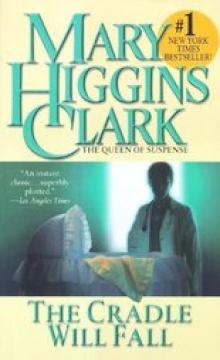 Clark, Mary Higgins 03 - The Cradle Will Fall
Clark, Mary Higgins 03 - The Cradle Will Fall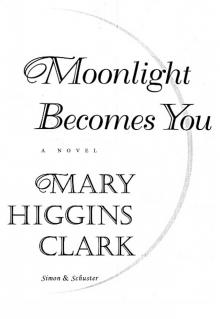 Moonlight Becomes You
Moonlight Becomes You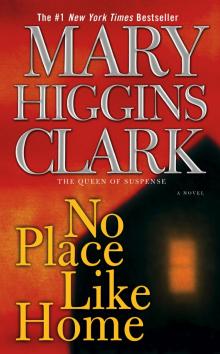 No Place Like Home
No Place Like Home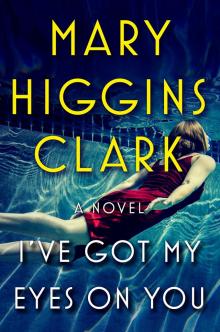 I've Got My Eyes on You
I've Got My Eyes on You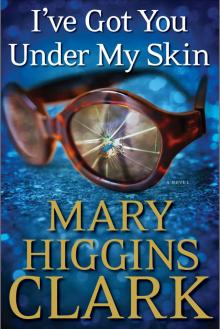 I've Got You Under My Skin
I've Got You Under My Skin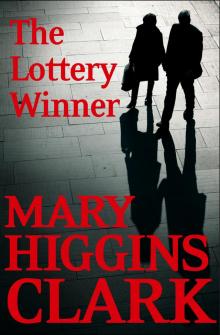 The Lottery Winner
The Lottery Winner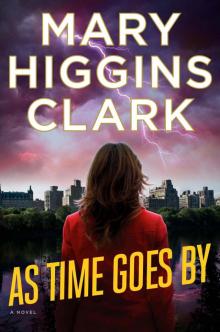 As Time Goes By
As Time Goes By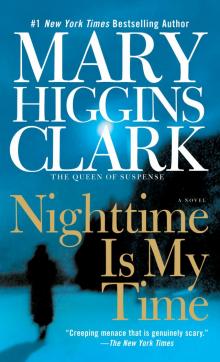 Nighttime Is My Time
Nighttime Is My Time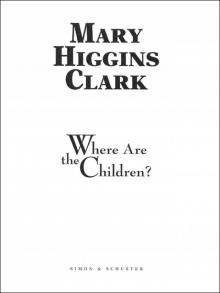 Where Are the Children?
Where Are the Children?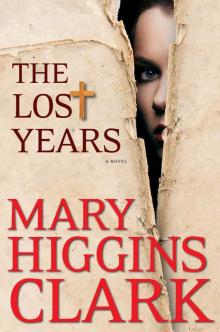 The Lost Years
The Lost Years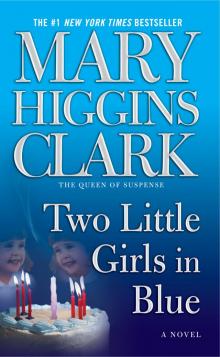 Two Little Girls in Blue
Two Little Girls in Blue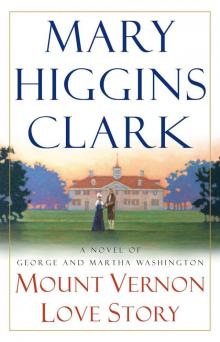 Mount Vernon Love Story: A Novel of George and Martha Washington
Mount Vernon Love Story: A Novel of George and Martha Washington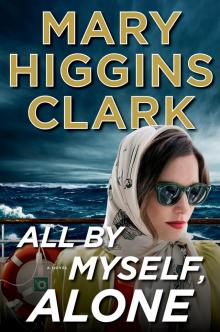 All by Myself, Alone
All by Myself, Alone The Melody Lingers On
The Melody Lingers On Just Take My Heart
Just Take My Heart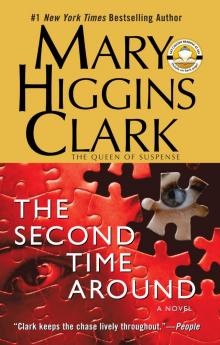 The Second Time Around
The Second Time Around A Cry in the Night
A Cry in the Night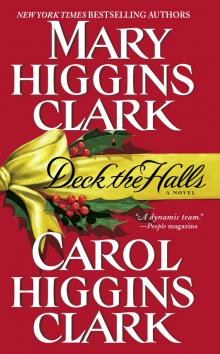 Deck the Halls
Deck the Halls We'll Meet Again
We'll Meet Again Before I Say Goodbye
Before I Say Goodbye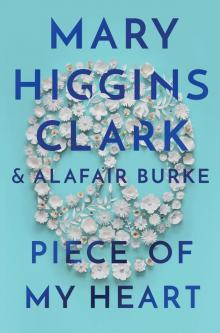 Piece of My Heart
Piece of My Heart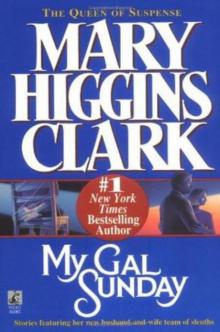 My Gal Sunday
My Gal Sunday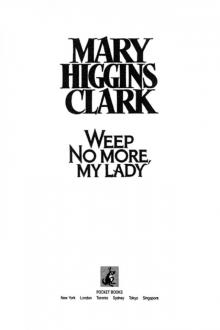 Weep No More, My Lady
Weep No More, My Lady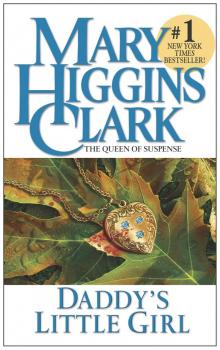 Daddy's Little Girl
Daddy's Little Girl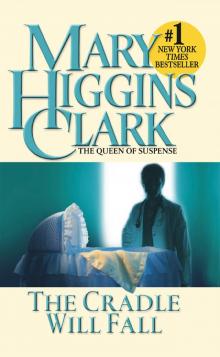 The Cradle Will Fall
The Cradle Will Fall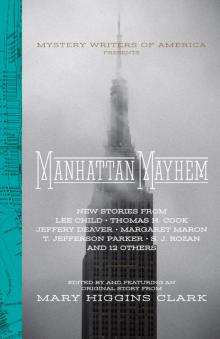 Manhattan Mayhem: New Crime Stories From Mystery Writers of America
Manhattan Mayhem: New Crime Stories From Mystery Writers of America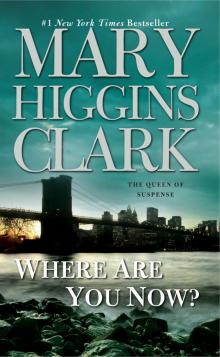 Where Are You Now?
Where Are You Now?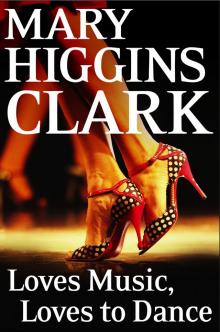 Loves Music, Loves to Dance
Loves Music, Loves to Dance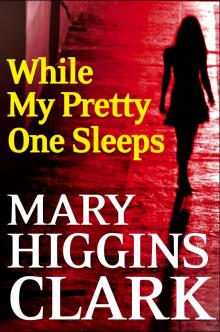 While My Pretty One Sleeps
While My Pretty One Sleeps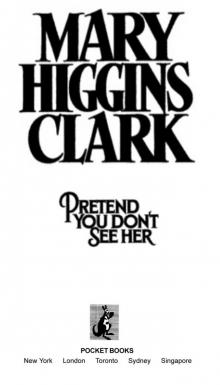 Pretend You Don't See Her
Pretend You Don't See Her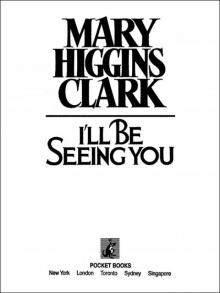 I'll Be Seeing You
I'll Be Seeing You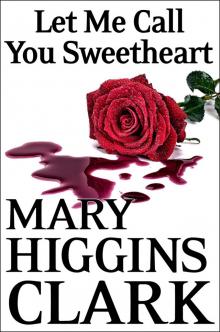 Let Me Call You Sweetheart
Let Me Call You Sweetheart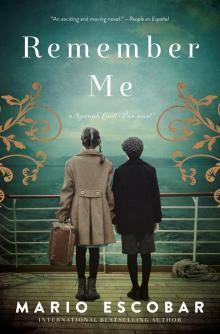 Remember Me
Remember Me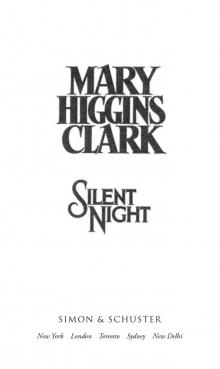 Silent Night
Silent Night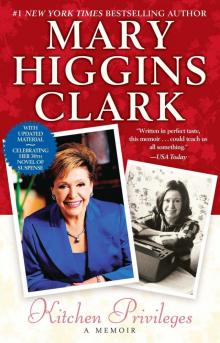 Kitchen Privileges
Kitchen Privileges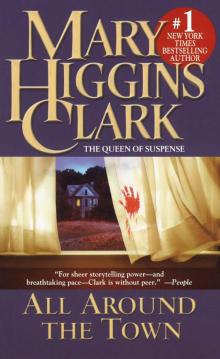 All Around the Town
All Around the Town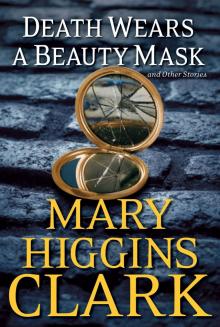 Death Wears a Beauty Mask and Other Stories
Death Wears a Beauty Mask and Other Stories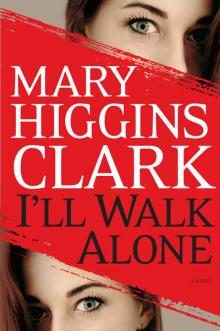 I'll Walk Alone
I'll Walk Alone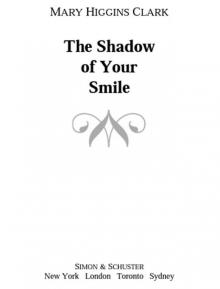 The Shadow of Your Smile
The Shadow of Your Smile Kiss the Girls and Make Them Cry
Kiss the Girls and Make Them Cry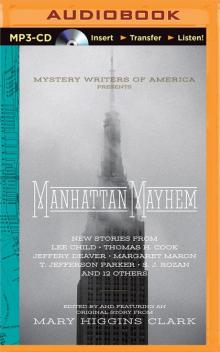 Manhattan Mayhem
Manhattan Mayhem Deck the Halls (Holiday Classics)
Deck the Halls (Holiday Classics)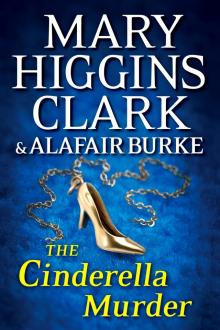 The Cinderella Murder
The Cinderella Murder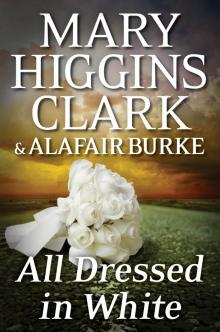 All Dressed in White
All Dressed in White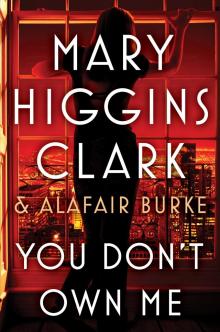 You Don't Own Me
You Don't Own Me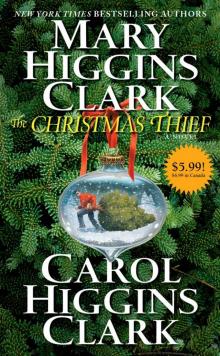 The Christmas Thief
The Christmas Thief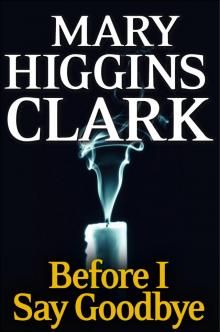 Before I Say Good-Bye
Before I Say Good-Bye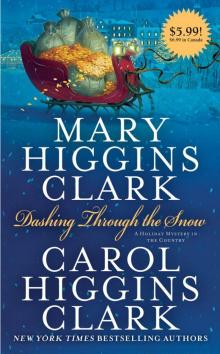 Dashing Through the Snow
Dashing Through the Snow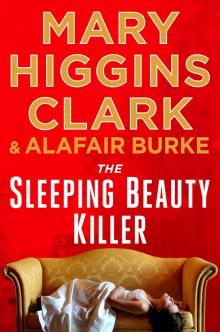 The Sleeping Beauty Killer
The Sleeping Beauty Killer Mount Vernon Love Story
Mount Vernon Love Story Santa Cruise
Santa Cruise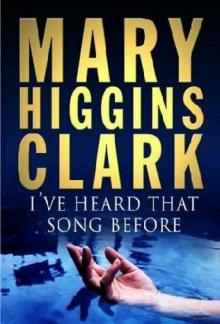 I 've Heard That Song Before
I 've Heard That Song Before